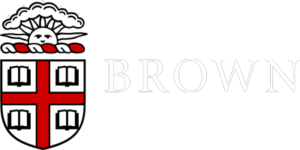Problem
Brown University is one of the oldest and most prestigious educational institutions in the US, receiving no shortage of applications for its limited spaces. However, the University was concerned that their pool of applicants lacked diversity.
Brown engaged GHS to address this problem, based on GHS’ track record of results-driven strategies via conceiving of and implementing measurable tactics in the digital realm
The GHS Models At Work

Mirror of Desire
By carefully determining the aspirational qualities that Brown’s offerings unlocked in the desired applicants, GHS arrived at a tactic of having current students who fit the desired demographic profile speak honestly and openly about their Brown experience; addressing their concerns upon applying and how they had overcome those concerns. This approach allowed for the prospective applicant to see a tangible representation of their personal aspirations.
Customer As Teacher
Rather than having these messages conveyed from Brown itself (a voice that is not yet trusted by potential applicants), GHS created a series of video testimonials in which current Brown students articulated these messages themselves. Essentially, GHS provided current students with the “teaching tools” to bridge the gap of information asymmetry between them and prospective students.


Architecture of Participation
Rather than simply hosting these videos on the Brown website (which is of course not highly visited by these underserved applicants), we created tactical and targeted social posts that put this messaging directly in front of those predisposed to care… at scale. Students at the school were available to discuss and encourage others to apply and join Brown. Through the networks GHS created, active student participation spurred interest in applying amongst those in the specifically targeted groups.
RESULT
Via our proprietary models, GHS defined the compelling messaging needed to attract a more diverse applicant pool, create digital and social assets to articulate this messaging, and disseminate these messages at scale.
Brown had record numbers of diverse applicants the following semester! By using the power of peer-to-peer communication via social media channels, GHS captured applicants Brown had been in need of reaching. As a byproduct of the campaign, Brown’s social platforms saw 18% growth in a short period of time. Not only did GHS solve the initial problem of diversifying Brown’s applicant pool, but GHS helped the University clearly define and digitally articulate their purpose.
Brown’s Dean of Admissions summed it up best: “We are swamped! The campaign definitely worked!”

